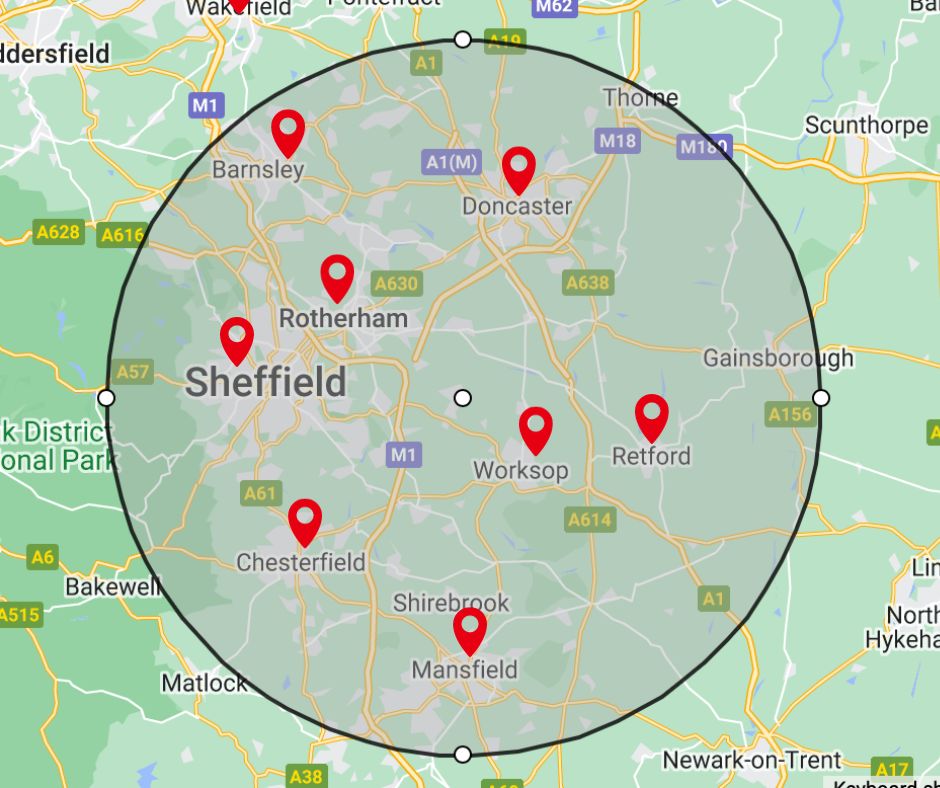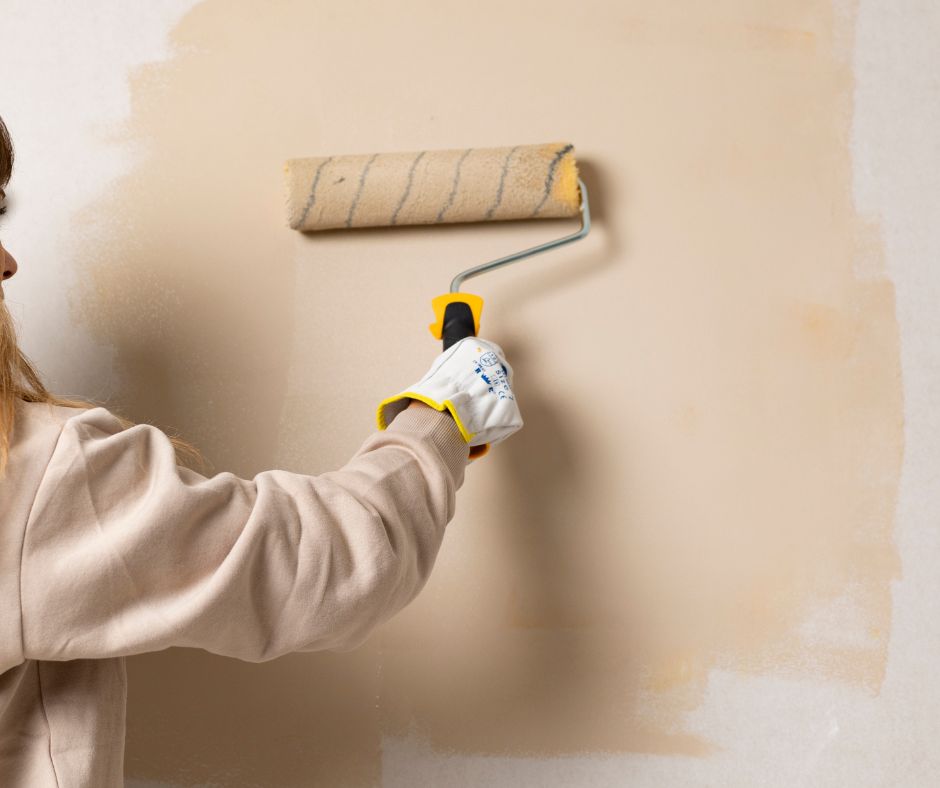In the world of construction, house rendering plays a pivotal role in both protecting and beautifying a property. Choosing the right rendering system is crucial for ensuring longevity, visual appeal, and structural integrity. This article introduces you to our rendering services. We explain the different rendering systems that are on the market today and we also have a look at some of the pros and cons of each. So let’s take a look.
Table of Contents
- What is Rendering?
- Why do people render houses?
- Benefits of House Rendering:
- Types of Traditional Render Systems:
- Modern Render Systems
- Monocouche v Silicone Render: Making the Right Choice
- Brick Effect Renders: Crafting Timeless Charm
- Stone Effect Renders: Elegance in Every Detail
- Creative Fusion: Mixing Effects for Individual Designs
- Insulated Render System or exterior wall insulation EWI
- Expert Tips and Considerations
- Frequently Asked Questions (FAQs)
What is Rendering?
Rendering has several meanings in the English language but in the building trade it comes from the word render meaning a coat of plaster or cement mortar applied to a surface. The process of house rendering therefore involves applying a protective and decorative layer to the exterior walls of a property. This practice has deep historical roots, with civilisations using various materials to shield their structures from the elements while adding artistic flair.
Why do people render houses?
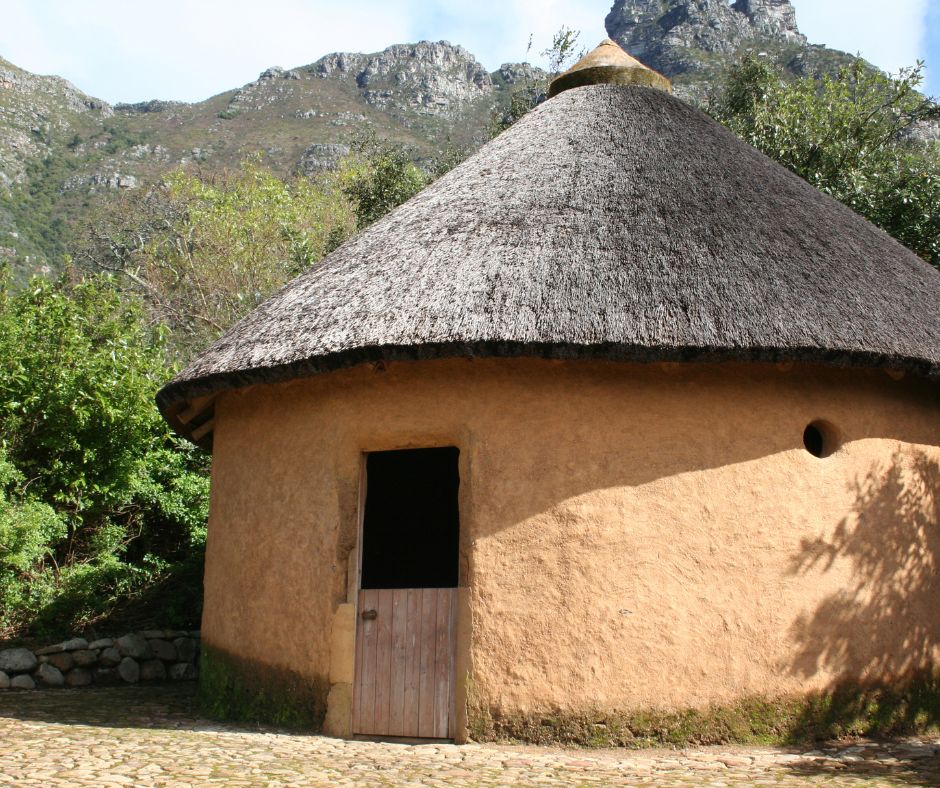
People have been rendering houses with an exterior coating for many years. In it’s primitive form mud houses comes to mind but rendered buildings in many different styles and colours can be seen throughout the world dating back centuries.
The reason people render their houses is to add a layer of protection to the property from the elements but it is also applied for decorative reasons. It can brighten up a tired building or hide poor brick work and joins where a new extension meets the original building.
Special effects, different colours and patterns can also be created completely changing the look of a property.
Some modern rendering systems also help insulate a property thereby reducing the amount of fuel needed to keep it warm.
The journey from mud to more refined materials mirrors the evolution of construction itself. Rendering has become a signature element in various architectural styles, adapting to both cultural differences and climatic challenges.
Benefits of House Rendering:
Today house rendering offers many benefits, including protection against harsh weather conditions, decorative enhancements that boost kerb appeal, and potential energy efficiency improvements. It’s a versatile solution for modern homeowners, but there are so many render systems and colours available that choosing the right one can be quite a daunting task.
In this guide, we emphasise the importance of choosing the right rendering system. The decision is not just about protection; it’s about crafting a visual identity for your home. Whether it’s the timeless appeal of traditional renders or the innovation of modern systems, your choice will leave an indelible mark on your property.
Key Benefits Takeaway
Helps protect against the elements
It’s Decorative
Some renders can even insulate and help reduce fuel bills
Now lets take a look at what these different type of render systems are:
Types of Traditional Render Systems:
Traditional rendering systems have stood the test of time, offering a range of options to suit different needs. From the cost-effective Sand and Cement Render to the eco-friendly Clay Render, each type brings its own set of advantages. The 4 types of traditional render systems you are likely to come across which are:-
- Sand and Cement Render
- Clay Render
- Lime Render
- Pebbledash Render or Roughcast Render
Sand and Cement Render
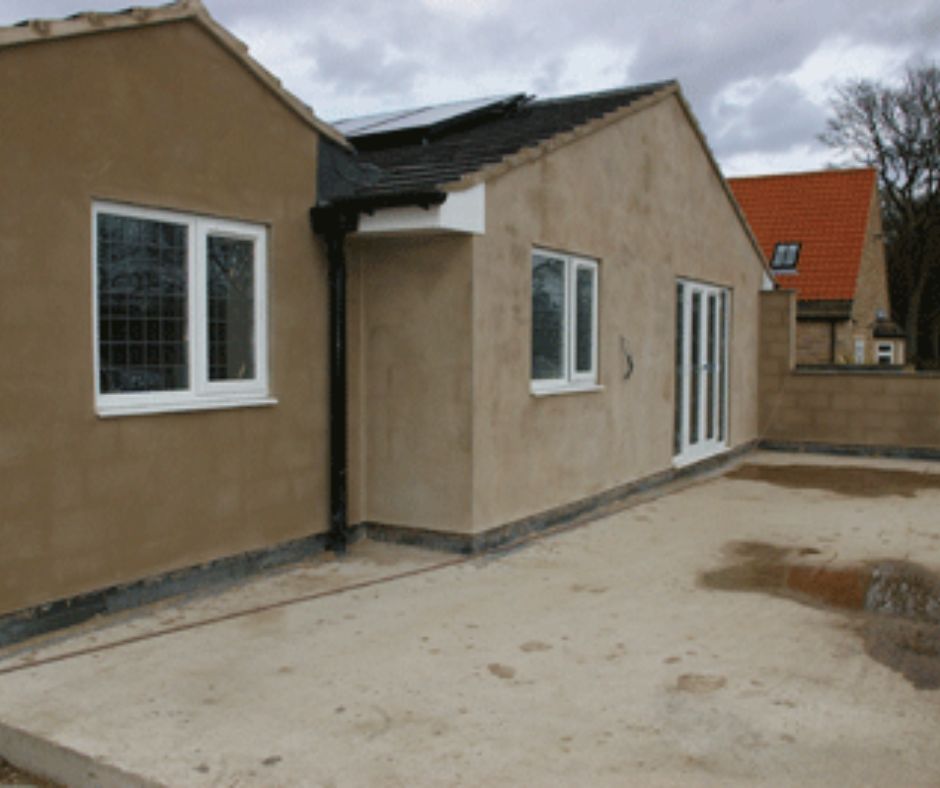
Sand and Cement Render remains a popular choice in the construction industry due to its affordability. Its straightforward application process and budget-friendly materials make it a preferred option for various projects.
This form of rendering is the most traditional and cheapest. It is just a sand and cement mortar mix that it applied to the walls which is then troweled up flat. It is also sometimes called cement or flat render and left in it’s natural form will dry a cement grey colour. It can be left as it is but it is usually painted to a desired colour.
A colour pigment can be mixed into the mortar before application which will give it a coloured tint. Decorative coatings such as Tyrolean or Highbuild can also be applied to add some extra weather protection and decoration.
The Pros of Using Sand And Cement Render
- It’s effective.
- It’s economical
- It hides poor brick work
- It can be repaired easily
The Cons of Using Sand And Cement Render
- Not as weather resistant as some of the modern day renders.
- The finish is quite basic
- It has to be maintained
- It is prone to cracking with movement
- Needs to be painted
The cost of Pebbledash Render
Sand and Cement render is still an effective render system. It is also a budget-friendly option as the materials are cheaper than modern render systems. However labour costs are similar as it takes as long to do and it will also require continuous maintenance.
The cost of sand and cement render is estimated to be around £60 – £80 per m2, including labour and materials. Prices do vary as a lot depends upon what substrate it is going onto and the amount of preparation work is required. Other costs to consider are scaffold and the cost to remove and dispose of old render. If you want to know more about our Sand and Cement Render service you can do so here.
Clay Render
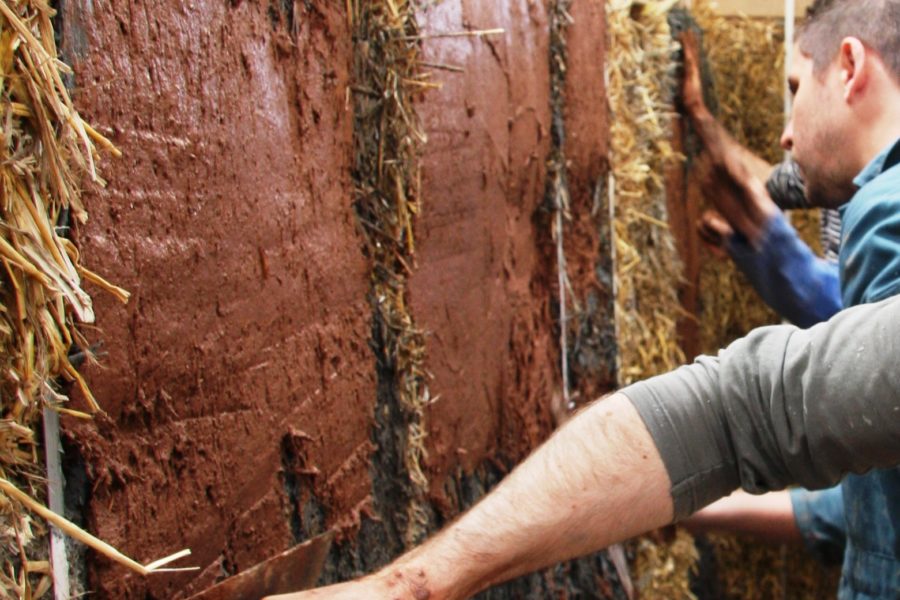
Clay being a natural material was one of the first to be used as a render exterior coating. It is more popular amongst developers creating eco friendly buildings as it has undergone very little processing. While Clay Render boasts environmental benefits, its aesthetic appeal should not be overlooked. The natural, earthen finish it provides is sought after by those aiming for both sustainability and a distinctive appearance.
Clay does however attract and hold water so is best suited for application over straw or timber. It also softens when water is applied which is ok for repairs but not so good for withstanding the British weather.
Whilst techniques such as adding straw or oils to the mix have been tried it is still quite a vulnerable render material that has a poor resistance to erosion.
The Pros of using Clay Render
- It’s environmentally friendly
- It can easily be repaired
- It’s cost effective
The Cons of using Clay Render
- Poor resistance to erosion
- Holds water
- The finish is quite basic
- High maintenance
Lime Render
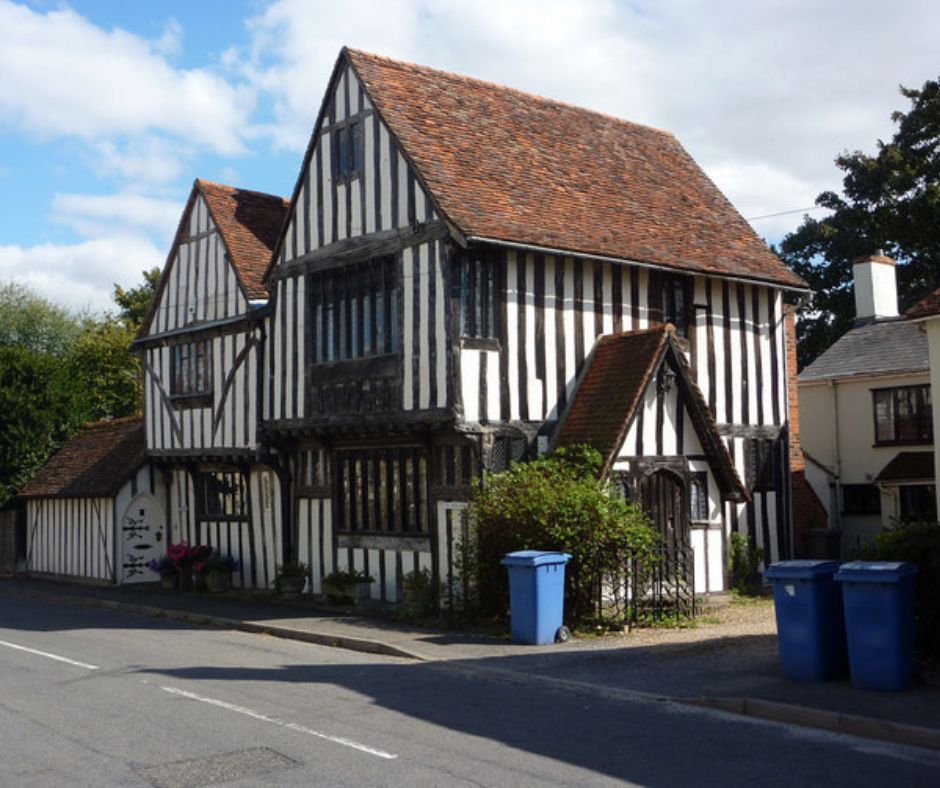
Lime render is again another traditional render that is still used today. Being made with lime it has a huge advantage over traditional sand and cement render as it is flexible thereby reducing the risk of cracking making it particularly suitable for buildings prone to movement. It leaves an attractive traditional finish which will suit older properties or ones wanting a traditional style look. It is also eco friendly and durable but it takes longer to apply and the materials are more expensive therefore making it a lot more expensive than a sand and cement render.
The Pros of Using Lime Render
- It’s Flexible
- It’s breathable
- It has an attractive traditional look
- It’s relatively low maintenance
- It’s eco friendly
The Cons of Using Lime Render
- It is quite expensive
- A skilled application is needed
- It takes longer to do
- It requires quality aggregates
Pebbledash Render
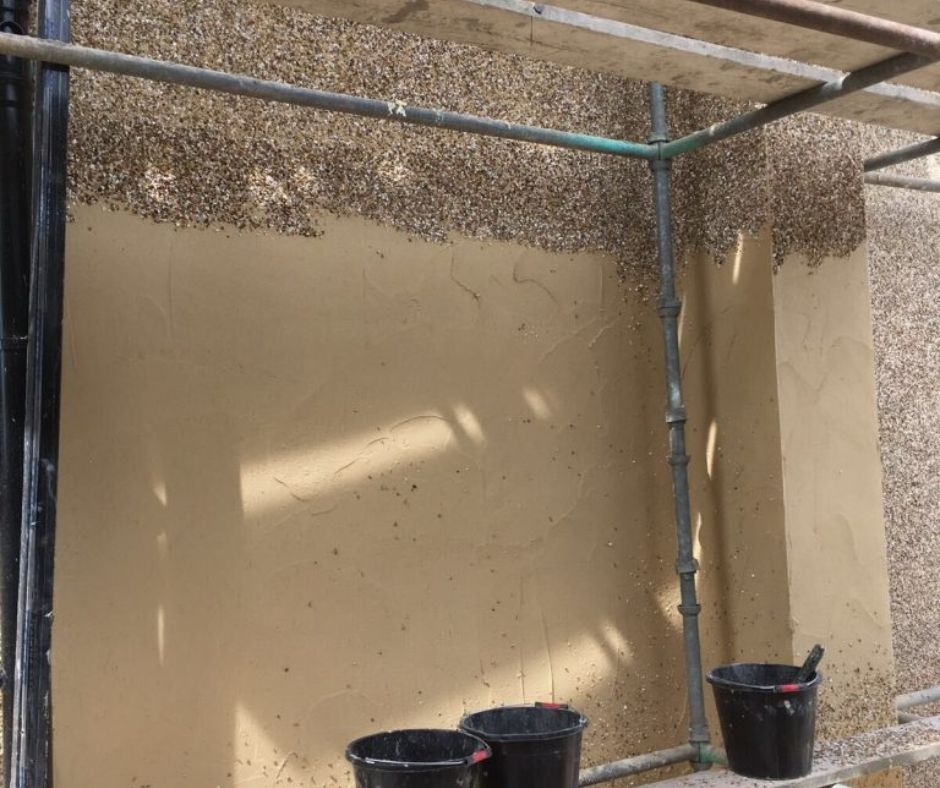
There are two types of pebbledash render which are commonly known as dry dash or wet dash render systems. Dry Dash starts off life as a standard render application known as the receiver which is traditionally sand and cement or lime render. Whilst the render is still wet pebbles or small stones are thrown at it which create the pebbledash decorative finish.
Wet dash, or as it is sometimes called roughcast, is slightly different as the pebbles are first of all mixed with the render coat before it is applied.
Both systems are as good as each other from a durability point of view so it is really a matter or choice on the finish. The dry dash finish leaves a decorative pebble coating that can be left in it’s natural state with the pebbles showing or it can be painted. With the wet dash system the pebbles are already coated in the render mix which creates a more textured look rather than being able to see the pebbles so it is normally painted afterwards.
Pebbledash Render has experienced a resurgence in interest, thanks to modern rendering receivers. The elimination of traditional drawbacks, coupled with a wide variety of aggregates, has made it a cost-effective and visually appealing option.
The Pros of Using Pebbledash Render
- It’s weather resistant
- Done well it can look attractive
- It’s easy to repair
- It’s not very expensive
The Cons of Using Pebbledash Render
- Not as weather resistant as some of the modern day renders.
- The finish is basic
- It has to be maintained
- It is prone to cracking with movement
The cost of Pebbledash Render
Similar to traditional sand and cement render pebbledash render is a budget friendly render option. The cost is the same as a sand and cement render application, ie around £60 – £80 m2 just with the added cost of pebbles and/or chosen aggregate. Other costs to consider are scaffold and the cost to remove and dispose of old render. Pebbledash render is very effective but also requires a degree of maintenance. You can find out more about our pebbledash render service here.
Modern Render Systems
Advancements in technology means that traditional renders have come a long way. Special additives such as polymers, silicones and acrylics have created cost effective solutions to a variety of construction issues. Not only do these modern day renders deal with practical problems encountered with some traditional renders they also come in a wide range of colours and different finishes giving a homeowner so much more choice and flexibility. So lets have a look at these modern renders.
Coloured Render
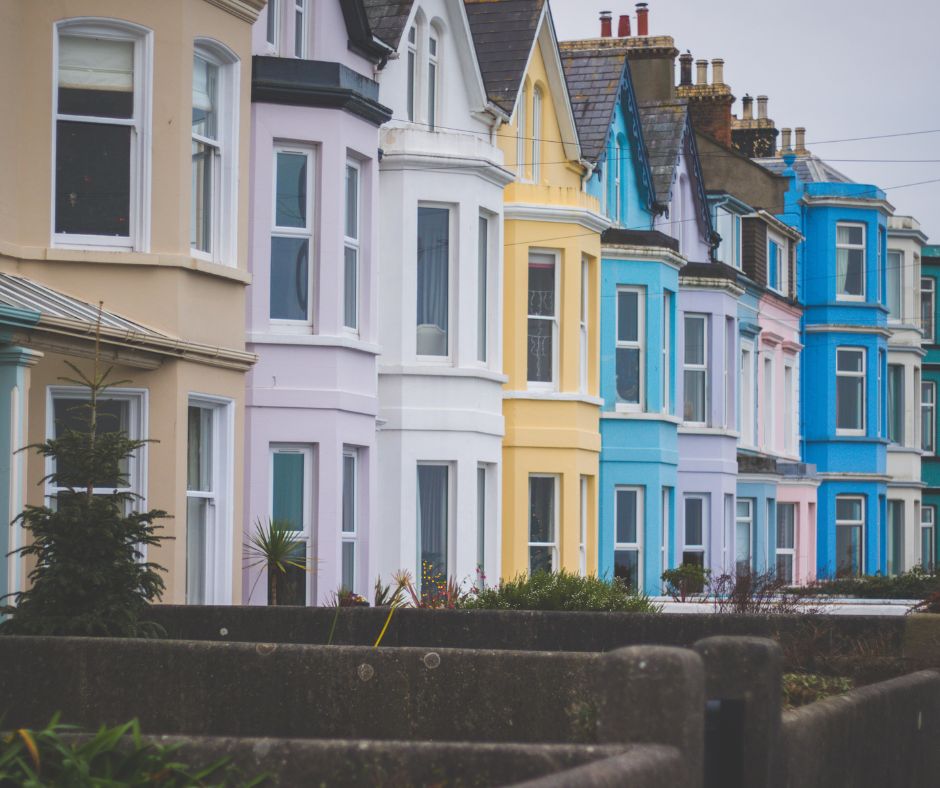
Coloured render is really a general term used for the modern through coloured polymer renders that are available today. It is not a separate render system on it’s own but it gets a mention here as I am always asked if we do coloured render. Well the answer is yes but first of all you need to know what coloured render or through coloured render actually means.
As we mentioned above traditionally render had to be painted or at best you could add some colour into the mix which would give it a coloured tint. Modern day coloured render is what is known as through coloured which means that the colour pigment is added during the manufacturing process. When the render is mixed and applied to the walls it is a solid colour throughout the render rather than a coating. The benefits of this are that you can choose from a range of available colours and you will never have to paint it. That is unless you change your mind on the colour at a later date. The pigments added during manufacturing ensure a solid, lasting colour throughout the render, providing enduring vibrancy.
Key Features of Coloured Render
Colour Variety: Choose from an extensive range of colours.
No Painting Required: The colour remains steadfast without the need for subsequent painting.
Enduring Vibrancy: The pigment infusion guarantees enduring vibrancy.
The main modern render systems in the coloured render market are:
- Monocouche Render
- Silicone Render
- Acrylic Render
Lets take a look at each of them in more detail:-
Monocouche Render

Discover the wonders of monocouche render, a dry powdered render with a coloured pigment. Unlike traditional renders, monocouche offers a chalky finish and is available in various colours.
It is a one-coat cement based through coloured render that is weather resistant and breathable. Its scraped render finish has a lovely clean crisp, pitted look and it is available in a range of colours. It is more expensive than traditional sand and cement render but it gives a much nicer finish and is much more durable. Although measures are taken to reduce the risk of cracking on application it is not crack resistant so unsuitable for buildings that are prone to movement. It is low maintenance and does not need painting.
The Pros of using Monouche Render
- It’s water resistant
- It’s low maintenance
- It doesn’t need painting
- It’s breathable
- It has a crisp clean finish
- There are a nice choice of colours
The Cons of Using Monocouche Render
- It’s not crack resistant
Key Benefits
Weather Resistance: Withstands diverse weather conditions.
Low Maintenance: Requires minimal upkeep.
Colour Palette: A broad spectrum of colours for personalised choices.
Quick Application: Being a one coat render it is quick and easy to apply.
The cost of Monocouche Render
The cost ranges from £80 – £90 per m2, including labour and materials. This is a guide only as the actual price will will depend upon what substrate it is being applied to, the amount of preparation work needed and base coat required. Other costs to consider are scaffold and the cost to remove and dispose of old render. If you are interested in a monoucouche render feel free to contact us for a custom quote.
You can also learn more about our monocouche render service here.
Silicone Render
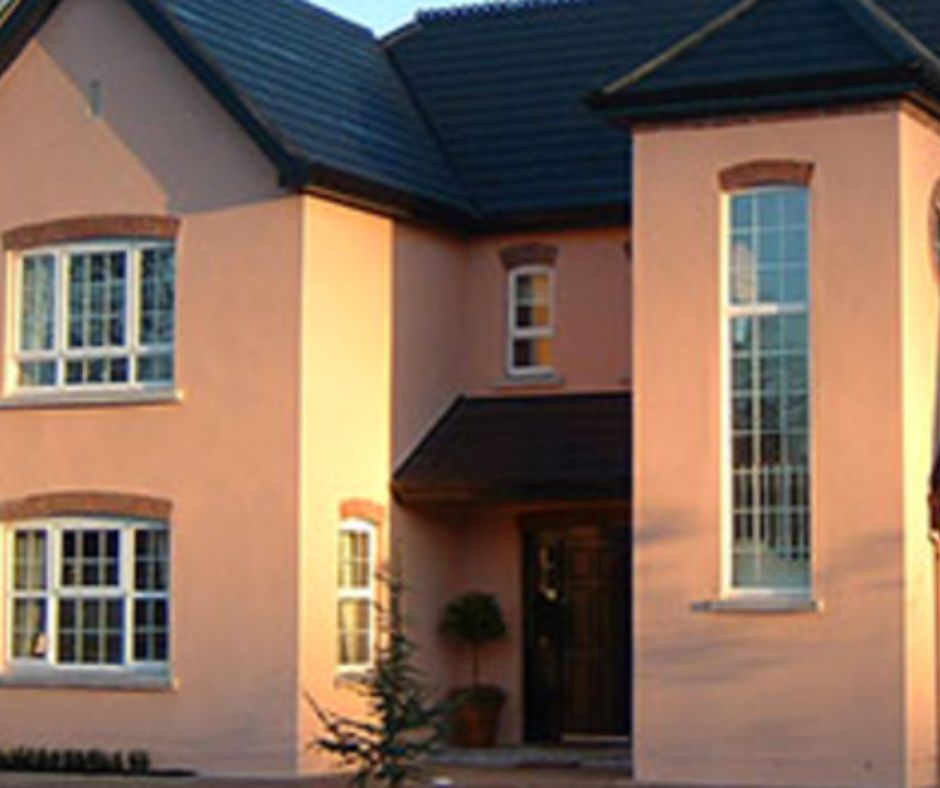
Silicone renders, known as ‘thin coat renders,’ boast crack resistance and waterproofing. While the material cost is more expensive, they are easier to apply and offer self-cleaning features.
Silicone is known for its ability to repel water and it is this silicone technology that has been incorporated into cement based render systems to create a high degree of water repellency to the render surface. Despite this it is breathable and has a nice natural look finish to it. It also comes in a range of colours and is low maintenance.
The Pros of Using Silicone Render
- • Water Repellent
- • Low Maintenance
- • Allows Structure To Breathe
- • Natural Looking Finish
- • Extensive colour range
The Cons of Using Silicone Render
- Not very environmentally friendly
- Can be quite expensive
Qualities
Water Repellent: Shields against water infiltration.
Low Maintenance: Demands minimal upkeep.
Breathability: Allows the structure to breathe.
Cost of Silicone Render
The cost of silicone render is estimated to be around £80 – £120 per m2, including labour and materials. Other costs to consider are scaffold and the cost to remove and dispose of old render. This should be taken as a guide only as actual prices depend upon what substrate it is being applied to, the amount of preparation work needed and what base coat is required. Although slightly more expensive than Monocouche render Silicone render is our most popular render system as it is a premium option with long-term benefits. You can find out more about our silicone render service here.
Acrylic Render
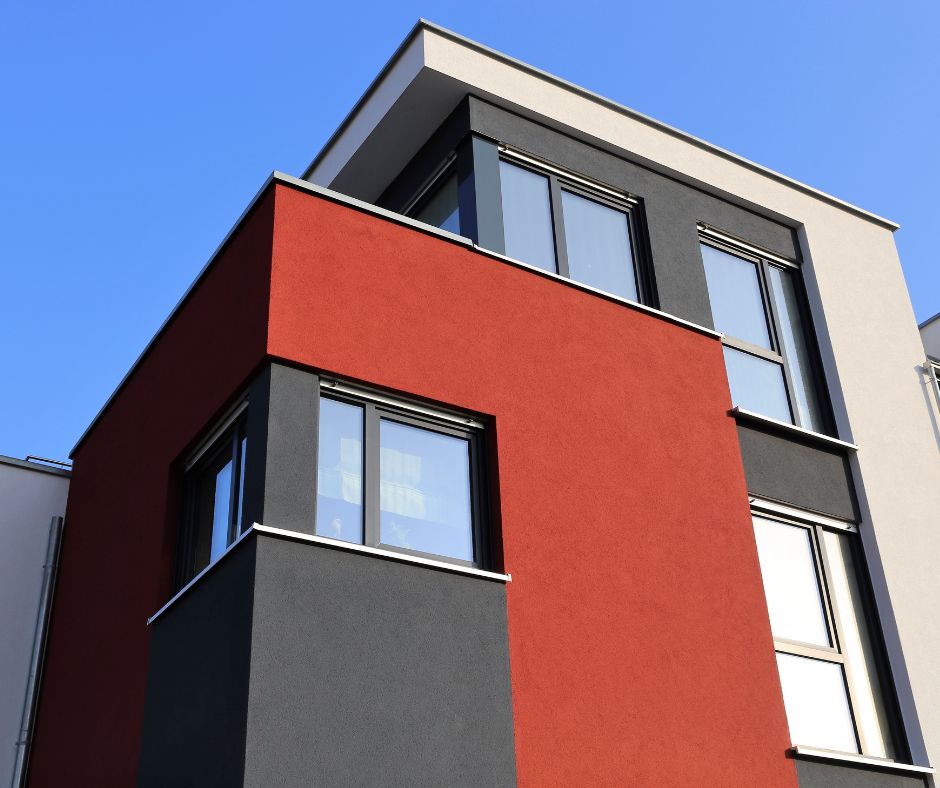
Acrylic resin is a type of plastic that is added to the render during manufacture. It makes the render more flexible so it is less prone to cracking due to movement and it also provides some extra water resistance. It comes in a range of colours and textures and reduces the risk of cracking through movement.
The flexibility of Acrylic Render makes it stand out in areas prone to movement. Its crack-resistant properties and availability in various colours, finishes, and textures make it a versatile option for those seeking durability and customisation.
The Pros of Using Acrylic Render
- Flexible and more crack resistant
- A range of colours, finishes and textures
- Water resistant
- Reasonably priced
The Cons of Using Acrylic render
- Not very environmentally friendly
- Does not allow property to breathe
Key Benefits
Flexibility: Resists cracking, especially in areas prone to movement.
Versatile Options: Varied colours, finishes, and textures.
Reasonable Pricing: Balances performance with cost considerations.
Cost of Acrylic Render
Acrylic render prices are very similar to silicone render prices. You can expect to pay between £80 – £120 per m2, including labour and materials but again it will vary depending upon what substrate it is going onto, the amount of preparation work needed and base coat required. Other costs to consider are scaffold and the cost to remove and dispose of old render.
Monocouche v Silicone Render: Making the Right Choice
Choosing between monocouche and silicone rendering depends on personal preferences, budget, and maintenance considerations. While silicone render may be more expensive initially, its longer lifespan makes it a potentially cost-effective choice. For budget-friendly quality, monocouche rendering remains an excellent option.
Quality Products, Trusted Techniques
At P3 plastering we have partnered with reputable manufacturers such as Weber, Parex, Johnstones and K-Rend, to supply our materials so that we can ensure the use of premium products in every project. This commitment reflects in the longevity, weather resistance, and overall quality of our rendered finishes.
Special Effects and Finishes
An added benefit of using modern day renders is that different special effects and finishes such as brick effect and stone. These effects can also be mixed together to create smart individual designs. We discussed the traditional pebbledash render above but modern renders have also enabled this system to come back into life.
With the use of new coloured modern render dash receivers instead of traditional sand and cement the majority of the cons that were previously associated with this type of render have been eliminated. Due to the modern render receiver that is used they are now much more weather resistant and the wide variety of different aggregates has enabled some really attractive finishes to be achieved.
These new systems are more expensive due to the materials used but they are proving to be very popular because of the other benefits they provide.
Brick Effect Renders: Crafting Timeless Charm
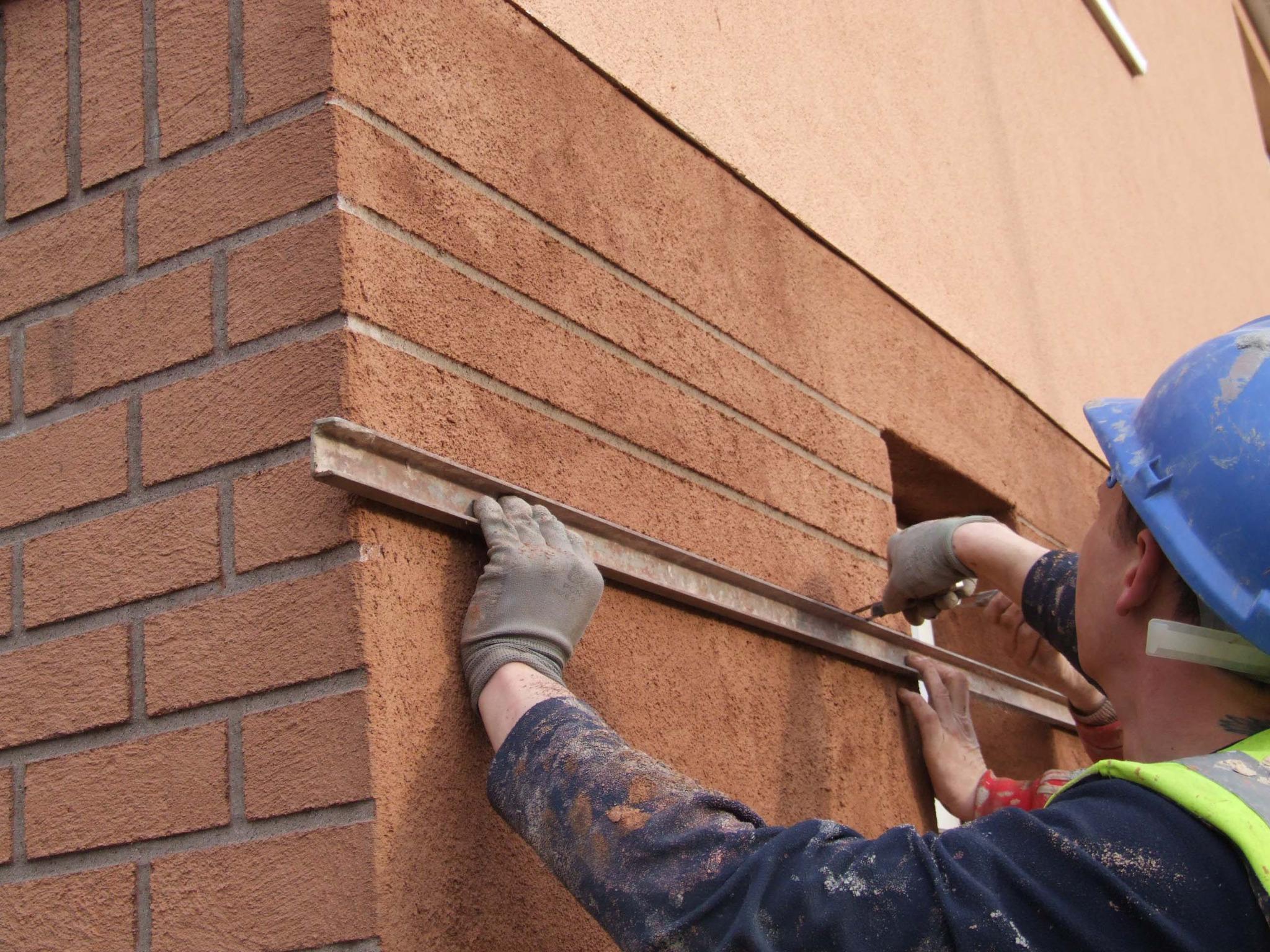
Brick effect renders mimic the timeless appeal of traditional brickwork, adding character and warmth to a property. Modern rendering systems replicate the texture and appearance of bricks, presenting an appearance alternative to conventional construction.
Key Benefits
Cost-Effective Visual Appeal: Achieve the charm of brick without the expense.
Versatile Application: Applicable to various architectural styles.
Diverse Colour Options: Tailor the finish to suit individual preferences.
You can learn more about our brick effect render service here.
Stone Effect Renders: Elegance in Every Detail
Stone effect renders capture the elegance of natural stone, transforming the exterior of a building into a masterpiece of sophistication. Through meticulous detailing and texture replication, modern rendering systems can totally redefine a building’s exterior visual appeal.
Advantages
Elevated Visual Appeal: Creates a luxurious, high-end appearance.
Durability Without the Weight: Enjoy the visual appeal of stone without the structural burden.
Customisation Possibilities: Varying textures and colours for personalised elegance.
Your can learn more about our stone effect render service here.
Creative Fusion: Mixing Effects for Individual Designs
Modern rendering systems allow the fusion of different effects, enabling the creation of unique and personalised designs. Combining brick and stone effects opens avenues for innovative expressions, making each property a canvas of individuality.
Key Benefits
Uniqueness: Craft bespoke designs tailored to specific preferences.
Architectural Versatility: Applicable to diverse architectural styles.
Visual Harmony: Achieve a harmonious blend of different effects.
In the world of modern rendering, special effects and finishes offer homeowners an opportunity to infuse their properties with distinctive character and style. Whether replicating the timeless allure of bricks, capturing the elegance of natural stone, or experimenting with creative fusions, modern rendering techniques redefine the possibilities of a buildings exterior appearance.
The world of rendering continues to evolve, propelled by technological innovations and a commitment to pushing the boundaries of architectural possibilities.
Insulated Render System or exterior wall insulation EWI
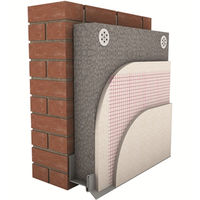
External Wall Insulation (EWI) is a cutting-edge technique seamlessly integrated with rendering, transforming not just the appearance but also the energy efficiency of buildings. This section delves into the significance of EWI and its compelling advantages.
Definition of External Wall Insulation
External Wall Insulation, often referred to as EWI, is a method where an additional layer of insulation material is applied to the exterior walls of a building, forming a protective barrier. This insulation layer is then covered with a render finish, combining appearance enhancement with functional benefits.
Integration with Rendering
The beauty of EWI lies in its harmonious integration with rendering. Once the insulation layer is in place, a specially formulated render coat is applied. This render not only serves as a protective covering but also provides the final visual appeal touch, allowing for a seamless, polished appearance.
Benefits of Insulation Without Compromising Interior Space
Enhanced Energy Efficiency: EWI acts as a formidable shield, significantly improving a property’s thermal performance. By minimising heat loss through the walls, it contributes to a more energy-efficient and sustainable living space.
Reduced Energy Bills: The insulation properties of EWI translate into reduced reliance on heating and cooling systems. This, in turn, leads to lower energy consumption and substantial cost savings on energy bills.
Visual Appeal Versatility: EWI doesn’t just excel in functionality but also offers a wide range of finishes and colours. Homeowners can choose from various textures and styles, ensuring the exterior maintains its visual appeal while benefiting from enhanced insulation.
Preservation of Interior Space: Unlike internal insulation methods, EWI doesn’t encroach on the interior living space. It provides a non-intrusive solution, making it particularly suitable for buildings without wall cavities or where preserving the interior layout is a priority.
Weather Resistance: The combined effect of insulation and rendering enhances the building’s ability to withstand adverse weather conditions, ensuring durability and longevity.
Opting for Insulated Render Systems is a holistic approach that not only elevates the appearance of a property but also reinforces its energy efficiency. It strikes a balance between visual appeal and sustainable living, making it a compelling choice for modern construction and renovation projects.
Expert Tips and Considerations

Choosing the right rendering system is a crucial decision that impacts both the appearance and functional aspects of a property. This section offers expert tips to guide you through this decision-making process, along with insights into maintaining rendered surfaces effectively.
Choosing the Right Rendering System
Assess Your Property
Before selecting a rendering system, assess the specific needs of your property. Factors such as location, weather conditions, and the existing structure play a significant role in determining the most suitable rendering type.
Consider Aesthetic Preferences
Different rendering systems offer varied textures and finishes. Consider your appearance preferences and how the chosen render will complement the overall design of your property.
Evaluate Long-Term Benefits
Look beyond the immediate visual impact. Assess the long-term benefits of each rendering system, including durability, maintenance requirements, and energy efficiency.
Understand Budgetary Constraints
Rendering costs can vary significantly. Understand your budget constraints and explore rendering options that align with your financial plan without compromising quality.
Seek Professional Advice
Engage with experienced rendering professionals. Their insights can provide valuable guidance, helping you make an informed decision based on the specific characteristics and requirements of your property. At P3 Plastering we offer a free no obligation render evaluation within our service areas to help advise you on the best option for your particular property.
Addressing Common Challenges
Surface Preparation Importance:
Before applying any rendering system, it is crucial to invest time and effort in proper surface preparation. This includes thorough cleaning, repairing any existing damage, and ensuring a smooth, suitable substrate for the render to adhere to.
Preventing and Managing Cracks
Incorporate measures during the application process to minimise the risk of cracks. Regular inspections and prompt repairs can help manage cracks effectively.
Proper Maintenance Practices
Establish a routine maintenance schedule. This includes cleaning, inspecting, and addressing any issues promptly to ensure the rendered surface’s longevity.
Weather Considerations
Be mindful of the local climate. Certain rendering systems may perform better in specific weather conditions. Consult with professionals to choose a system that can withstand the prevalent climate.
Professional Restoration
If the rendered surface shows signs of wear or damage, consider professional restoration services. Expert restoration can revitalise the appearance and functionality of the render.
Stay Informed About Technological Advances
Rendering technologies continually evolve. Stay informed about the latest advancements, as newer systems may offer improved durability, energy efficiency, and aesthetic options.
Making informed decisions about rendering involves a comprehensive understanding of your property’s unique characteristics, your preferences, and long-term considerations. Seeking professional advice, contracting experienced installers and implementing proper maintenance practices are key to ensuring that your chosen rendering system stands the test of time while enhancing the overall appeal of your property.
Frequently Asked Questions (FAQs)
What is the purpose of house rendering?
House rendering serves both protective and decorative functions. It shields the property from the elements and enhances its visual appeal.
Why do people choose to render their houses?
People render their houses for protection against the elements, aesthetic improvements, and, in some cases, to insulate the property, reducing energy bills.
What are the key benefits of house rendering?
House rendering offers protection against harsh weather, decorative enhancements for kerb appeal, and, in some cases, insulation for energy efficiency.
What are the main types of traditional render systems?
Traditional render systems include Sand and Cement Render, Clay Render, Lime Render, and Pebbledash Render or Roughcast Render.
How much does Pebbledash Render cost?
Pebbledash Render is a budget-friendly option, estimated to be around £60 – £80 per m2, including labour and materials plus the cost of the chosen aggregate.
What are the main modern render systems?
Modern render systems include Monocouche Render, Silicone Render, and Acrylic Render.
How long does Monocouche Render last?
Monocouche Render if installed by a professional and looked after should last 20 plus years, providing durability and requiring minimal maintenance.
What is the cost of Silicone Render?
The cost of Silicone Render is estimated to be around £80 – £120 per m2, including labour and materials. However this should be taken as a guide as prices will depend upon what substrate it is being applied to, how much preparation work is required and the type of base coat needed.
What are the advantages of External Wall Insulation (EWI)?
EWI enhances energy efficiency, reduces energy bills, preserves interior space, and provides a weather-resistant finish.
How do I choose the right rendering system for my property?
Assess your property’s needs, consider aesthetic preferences, evaluate long-term benefits, understand budget constraints, and seek professional advice for an informed decision.
How can I prevent and manage cracks in the rendering?
Ensure the installer incorporates measures during the application process to minimise the risk of cracks, conduct regular inspections, and address issues promptly.
What is the cost of Acrylic Render?
Acrylic render prices are similar to Silicone Render, ranging from £80 – £120 per m2, including labour and materials but again it will depend upon the substrate it is being applied to, how much preparation work is needed and the base coat required.
Why is Professional Installation Important?
Ensuring the correct installation of your chosen rendering system is paramount. Professional installers bring expertise and precision to the process, minimising the risk of issues such as cracking and ensuring the longevity of the rendered surface.
Disclaimer: The content offered in this guide regarding house rendering systems is meant solely for general informational purposes. While our aim is to provide accurate and current information, the field of rendering can be complex, and individual projects may entail unique specifications.
Rendering applications encompass a variety of factors, and the information presented here should not be viewed as a replacement for professional advice. Each property is distinctive, and decisions regarding a new house render should be founded on a comprehensive assessment of specific needs, local conditions, and consultation with experts.
We strongly advise seeking personalised guidance from qualified professionals to ensure that the information provided aligns with the particular characteristics of your property. Choosing a suitable render involves numerous considerations, and professional insight will assist in tailoring solutions to meet your project's requirements.
P3 Plastering and the authors of this guide do not accept any responsibility for decisions made based on the information provided. It is always prudent to consult with experienced professionals to obtain accurate and customised advice for your render project.Conclusion
In conclusion, understanding the intricate world of house rendering unveils a spectrum of choices, each contributing to the functionality, aesthetics, and longevity of your property. From the traditional methods rooted in history to the innovative technologies shaping the future, rendering has evolved into a dynamic and multifaceted field.
Throughout this exploration, we’ve delved into the significance of rendering, not only as a protective measure against the elements but as a transformative tool capable of breathing new life into structures. Whether it’s the time-tested sand and cement render or the cutting-edge coloured polymer renders, each system brings its unique advantages and considerations.
The benefits of rendering extend beyond the surface, encompassing energy efficiency, weather resistance, and the ability to express individual style through a variety of finishes. Understanding these nuances empowers homeowners to make informed decisions tailored to their property’s specific needs.
As we navigate the intricate landscape of rendering, it’s crucial to seek professional advice, consider long-term implications, and stay attuned to technological advancements. Our homes are not only shelters but expressions of our lifestyles, and the right rendering choice can enhance both form and function.
In your journey to elevate your property through rendering, remember that each layer contributes to the narrative of your home. So, choose wisely, considering the historical context, modern innovations, and expert insights provided here. Your property is a canvas, and rendering is the brushstroke that adds depth, character, and protection.
As we conclude, remember that the aim of this guide is to empower you to make informed decisions about your rendering needs. Whether you opt for a time-tested traditional render or embrace the innovation of modern systems, understanding your property’s unique characteristics is key to a successful rendering project.

